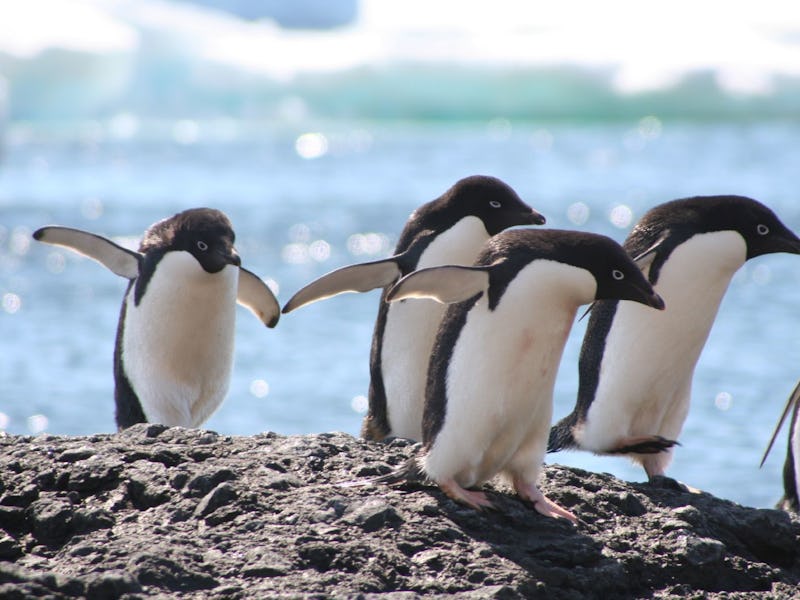Larsen C Iceberg Break May Mean Trouble for Antarctica’s Penguins
We spoke to two penguin experts.

When a trillion-ton iceberg broke off the Larsen C ice shelf in Antarctica on Wednesday, most commentators focused on the danger the event might pose to humans, but many Twitter users also voiced concern for Antarctica’s penguins. Even though there are no penguins on Larsen C itself, the continent’s birds will likely be affected by the iceberg separation. Inverse spoke to some penguin experts about possible short-term and long-term threats.
Ron Naveen, CEO and founder of the penguin-focused nonprofit Oceanites, has been studying how environmental changes impact Antarctic penguins for more than three decades. He talked Inverse through a potential short-term impact: Penguin colonies near Larsen C may have more difficulty finding food.
The two penguin species most likely to be affected in that way live within 200 miles of the place where the shelf broke off. First, there’s the emperor penguin, of which more than 2,000 adults are currently roaming on the ice by Snow Hill Island.
Emperor penguins.
Then there are the Adélie penguins, of which about 32,000 breeding pairs have nest sites on Cockburn and Seynour Islands (they’re currently elsewhere, but will return to mate in a few months).
Adélie penguins.
Here are the breeding sites of those penguin colonies (noted with blue markers) compared to the site where the iceberg broke off (noted with a red arrow):
Red arrow points to the former spot of the trillion-ton ice chunk on the Larsen C shelf. Markers, in descending order: Cockburn Island, Seymour Island, and Snow Hill Island.
When the emperors and Adélies breed on these islands, they also forage for food within range of Larsen C, “so one immediate concern is whether there will be an impact in terms of their finding food,” Naveen says. The emperors are breeding right now — “male emperors are either incubating eggs, or the eggs are just hatching, with females returning back to feed the newborns” — but Adélies won’t be affected until they return to breed in late September or October.
Long-term issues could arise if the iceberg melts or strands onto another floating mass or land mass. Such threats could impact all five of Antarctica’s penguin species, which together make up at least 11.4 million birds.
“As the berg melts, there could be disruption to the ocean food chain,” Naveen tells Inverse, “simply because of fresh water being added to the ecosystem, or the huge berg impeding penguins’ access to favored prey items.”
Researcher Kerry-Jayne Wilson, co-author of 2016 research about a stranded iceberg that decimated Adélie penguins in Antarctica’s Commonwealth Bay, warned that a grounded iceberg could also be dangerous.
“What is important is if and where it strands, and what follows from that standing,” Wilson tells Inverse. “It is possible that the new mega-berg will drift into deep water, never strand and the consequences could be minor and not affect penguins at all. However, if, as has happened twice recently, it strands in a biologically or oceanographically important area, then the consequences could be dire.”
A satellite image of the iceberg (bottom-left) blocking an Adélie penguin colony in Commonwealth Bay, taken in 2016.
In the case that Wilson studied, a grounded iceberg enclosed a colony of penguins and set them 60 kilometers away from the sea by which they had previously lived. As a result, an estimated 150,000 Adélies were unable to breed, and many eggs and chicks died.
Humans aren’t the only ones who could be affected by the Larsen C separation. Some penguins may be in danger; and unlike us, there’s not much they can do about it.